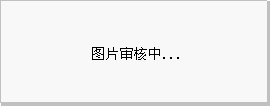用一个简单的例子来看MIDlet 的生命周期
想来估计也没有比网上教程说的更清楚了,我这里摘录的只是文字,从www.j2medev.com来获取,更详细的资料可以到www.j2medev.com上查看。我将会以一个例子跟查看官方的源代码来分析它们。
理解J2ME 的体系结构并不像想象的那么容易,我们觉得读更多的资料帮助也不大,我们
直接迈向J2ME 开发也许会对你理解J2ME 平台体系结构这个重要的概念有所帮助。在MIDP
中定义了一种新的应用程序模型MIDlet,它是被Application Management Software(AMS)管理
的。AMS 负责MIDlet 的安装、下载、运行和删除等操作。在被AMS 管理的同时,MIDlet 可
以和应用管理软件通信通知应用管理软件自己状态的变化,通常是通过方法notifyDestroyed()
和notifyPaused()实现的
MIDlet 有三个状态,分别是pause、active 和destroyed。在启动一个MIDlet 的时候,应用
管理软件会首先创建一个MIDlet 实例并使得他处于pause 状态,当startApp()方法被调用的时候
MIDlet 进入active 状态,也就是所说的运行状态。在active 状态调用destroyApp(boolean
第1 章 J2ME 技术概述
4
unconditional)或者pauseApp()方法可以使得MIDlet 进入destroyed 或者pause 状态。值得一提的
是destroyApp(boolean unconditional)方法,事实上,当destroyApp()方法被调用的时候,AMS 通
知MIDlet 进入destroyed 状态。在destroyed 状态的MIDlet 必须释放了所有的资源,并且保存了
数据。如果unconditional 为false 的时候, MIDlet 可以在接到通知后抛出
MIDletStateChangeException 而保持在当前状态,如果设置为true 的话,则必须立即进入destroyed
状态。下图说明了MIDlet 状态改变情况:
<!--[if !vml]--> <!--[endif]-->
<!--[endif]-->

看看我那个简单的例子
 public class HelloWorld extends MIDlet ......{
public class HelloWorld extends MIDlet ......{
 public HelloWorld() ......{
public HelloWorld() ......{  System.out.println("这个是程序的构造函数,程序运行的时候首先调用这个");
System.out.println("这个是程序的构造函数,程序运行的时候首先调用这个"); }
}
 protected void destroyApp(boolean unconditional)
protected void destroyApp(boolean unconditional) throws MIDletStateChangeException ......{
throws MIDletStateChangeException ......{ System.out.println("这个是程序的destroyed事件,当您按下退出时调用");
System.out.println("这个是程序的destroyed事件,当您按下退出时调用"); }
}
 protected void pauseApp() ......{
protected void pauseApp() ......{ System.out.println("这个是程序的pause事件,当您按下暂停的时调用");
System.out.println("这个是程序的pause事件,当您按下暂停的时调用");
 }
}
 protected void startApp() throws MIDletStateChangeException ......{
protected void startApp() throws MIDletStateChangeException ......{ System.out.println("这个是程序的active事件,程序启动时候调用");
System.out.println("这个是程序的active事件,程序启动时候调用");
 }
}
 }
}
大家可以运行程序中看到这个程序的运行先后顺些。基本上就明白了程序的调用机制了。
现在大家思考下,j2me的MIDlet是怎么样运行的呢?sun在里面进行了什么样子的限制与手脚呢?
一般的应用程序都有个main入门。这里没有,为什么呢?
我想这个就是ASM的作用了,sun在后台做了很多处理,比如包括,启动容器,启动MIDlet相关的资源等等。
 public static void main(String args[]) ...{
public static void main(String args[]) ...{ CommandState state = new CommandState();
CommandState state = new CommandState();
 /**//*
/**//* * pass resource strings down to the native system menu and
* pass resource strings down to the native system menu and * popup choice group methods...
* popup choice group methods... */
*/ initSystemLabels();
initSystemLabels();
 /**//*
/**//* * We will try to handle any printing at this level, because
* We will try to handle any printing at this level, because * displaying JAM command line errors is device specific.
* displaying JAM command line errors is device specific. */
*/ try ...{
try ...{ initializeInternalSecurity();
initializeInternalSecurity();
 /**//* Start a inbound connection watcher thread. */
/**//* Start a inbound connection watcher thread. */ new Thread(new PushRegistryImpl()).start();
new Thread(new PushRegistryImpl()).start();
 restoreCommandState(state);
restoreCommandState(state);
 // handle any development machine only functions at this level
// handle any development machine only functions at this level switch (state.nextCommand) ...{
switch (state.nextCommand) ...{ case CommandProcessor.RUN_CLASS:
case CommandProcessor.RUN_CLASS: runLocalClass(state);
runLocalClass(state); state.nextCommand = CommandProcessor.EXIT;
state.nextCommand = CommandProcessor.EXIT; break;
break;
 case CommandProcessor.MANAGE:
case CommandProcessor.MANAGE: manage(state);
manage(state); break;
break;
 case CommandProcessor.LIST:
case CommandProcessor.LIST: case CommandProcessor.STORAGE_NAMES:
case CommandProcessor.STORAGE_NAMES: list(state);
list(state); state.nextCommand = CommandProcessor.EXIT;
state.nextCommand = CommandProcessor.EXIT; break;
break;
 case CommandProcessor.REMOVE:
case CommandProcessor.REMOVE: if (DEV_STORAGE_NAME.equals(state.suiteStorageName)) ...{
if (DEV_STORAGE_NAME.equals(state.suiteStorageName)) ...{ removeDevStorage(state);
removeDevStorage(state); state.nextCommand = CommandProcessor.EXIT;
state.nextCommand = CommandProcessor.EXIT; break;
break; }
}
 // fall through
// fall through default:
default: CommandProcessor.perform(state);
CommandProcessor.perform(state); if (state.status == CommandProcessor.MIDLET_SUITE_NOT_FOUND) ...{
if (state.status == CommandProcessor.MIDLET_SUITE_NOT_FOUND) ...{ System.out.println("The MIDlet suite was not found.");
System.out.println("The MIDlet suite was not found."); } else if (state.initialCommand == CommandProcessor.INSTALL &&
} else if (state.initialCommand == CommandProcessor.INSTALL && state.status == CommandProcessor.OK) ...{
state.status == CommandProcessor.OK) ...{ System.out.println("Storage name: " +
System.out.println("Storage name: " + state.suiteStorageName);
state.suiteStorageName); }
} }
} } catch (InvalidJadException ije) ...{
} catch (InvalidJadException ije) ...{ System.out.println("** Error installing suite (" +
System.out.println("** Error installing suite (" + ije.getReason() + "): " +
ije.getReason() + "): " +  messageForInvalidJadException(ije));
messageForInvalidJadException(ije)); } catch (IOException ioe) ...{
} catch (IOException ioe) ...{ System.out.println("** Error installing suite: " +
System.out.println("** Error installing suite: " + ioe.getMessage());
ioe.getMessage()); } catch (ClassNotFoundException ex) ...{
} catch (ClassNotFoundException ex) ...{ if (state.initialCommand == CommandProcessor.MANAGE) ...{
if (state.initialCommand == CommandProcessor.MANAGE) ...{
 state.runExceptionMessage =
state.runExceptionMessage = Resource.getString("The application cannot be launched. " +
Resource.getString("The application cannot be launched. " + "One of the application classes appears to be missing. " +
"One of the application classes appears to be missing. " + "This could be due to a mis-named class. Contact the " +
"This could be due to a mis-named class. Contact the " + "application provider to resolve the issue.");
"application provider to resolve the issue."); } else ...{
} else ...{ System.out.println("MIDlet class(s) not found: " +
System.out.println("MIDlet class(s) not found: " +  ex.getMessage());
ex.getMessage()); }
} } catch (InstantiationException ex) ...{
} catch (InstantiationException ex) ...{ if (state.initialCommand == CommandProcessor.MANAGE) ...{
if (state.initialCommand == CommandProcessor.MANAGE) ...{ state.runExceptionMessage = Resource.getString(
state.runExceptionMessage = Resource.getString( "The application cannot be launched. The application " +
"The application cannot be launched. The application " + "may have done an illegal operation. Contact the " +
"may have done an illegal operation. Contact the " + "application provider to resolve the issue.") + " " +
"application provider to resolve the issue.") + " " + ex.getMessage();
ex.getMessage(); } else ...{
} else ...{ System.out.println(
System.out.println( "MIDlet instance(s) could not be created: " +
"MIDlet instance(s) could not be created: " +  ex.getMessage());
ex.getMessage()); }
} } catch (IllegalAccessException ex) ...{
} catch (IllegalAccessException ex) ...{ if (state.initialCommand == CommandProcessor.MANAGE) ...{
if (state.initialCommand == CommandProcessor.MANAGE) ...{ state.runExceptionMessage = Resource.getString(
state.runExceptionMessage = Resource.getString( "The application cannot be launched. The application " +
"The application cannot be launched. The application " + "may have done an illegal operation. Contact the " +
"may have done an illegal operation. Contact the " + "application provider to resolve the issue.") + " " +
"application provider to resolve the issue.") + " " + ex.getMessage();
ex.getMessage(); } else ...{
} else ...{ System.out.println(
System.out.println( "MIDlet class(s) could not be accessed: " +
"MIDlet class(s) could not be accessed: " +  ex.getMessage());
ex.getMessage()); }
} } catch (OutOfMemoryError ex) ...{
} catch (OutOfMemoryError ex) ...{ if (state.initialCommand == CommandProcessor.MANAGE) ...{
if (state.initialCommand == CommandProcessor.MANAGE) ...{ state.runExceptionMessage = Resource.getString(
state.runExceptionMessage = Resource.getString( "The application has unexpectedly quit because it ran " +
"The application has unexpectedly quit because it ran " + "out of memory.");
"out of memory."); } else ...{
} else ...{ System.out.println("The MIDlet has run out of memory");
System.out.println("The MIDlet has run out of memory"); &nb
&nb安徽新华电脑学校专业职业规划师为你提供更多帮助【在线咨询】


 热门精品专业
热门精品专业 public class HelloWorld extends MIDlet ......{
public class HelloWorld extends MIDlet ......{ public HelloWorld() ......{
public HelloWorld() ......{ 

